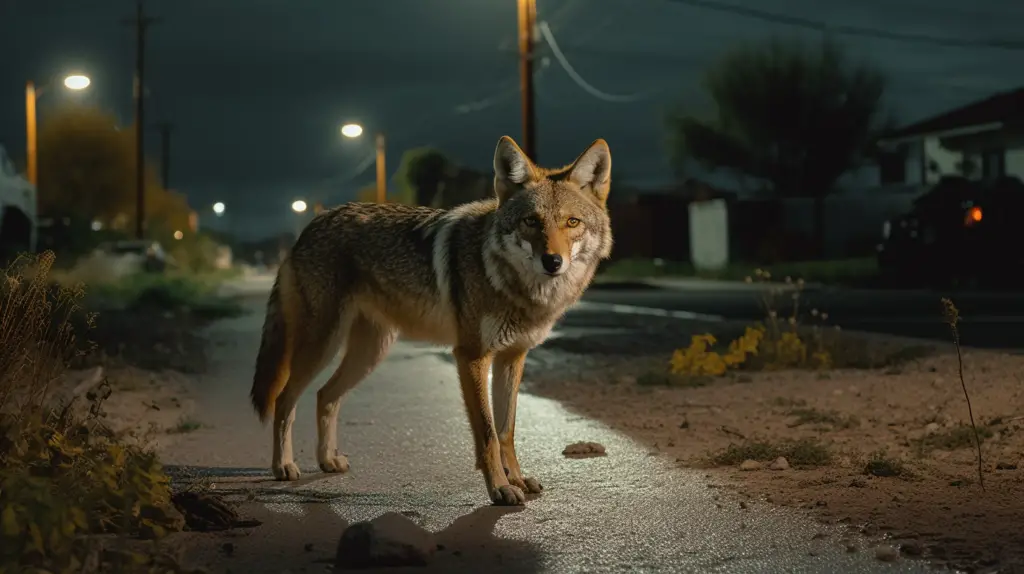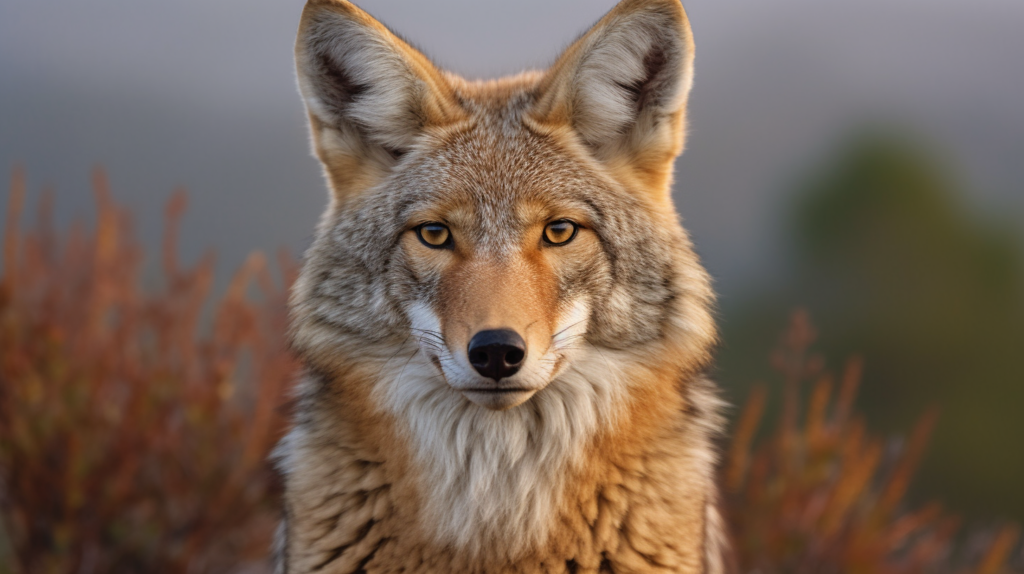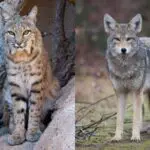The coyote fox is a mythical creature that has been rumored to exist for centuries. It is said to be a hybrid of a coyote and a fox, and it is often described as being larger and more aggressive than either of its parents.
However, there is no scientific evidence to support the existence of the coyote fox. In fact, there is no evidence that coyotes and foxes even interbreed in the wild.

The idea of the coyote fox may have originated from people who have seen coyotes and foxes living in close proximity. Coyotes and foxes are both common animals in North America, and they can sometimes be found in the same areas.
However, this does not mean that they are interbreeding. Coyotes and foxes are different species, and they have different mating habits. Coyotes typically mate for life, while foxes are more promiscuous.
So, while the coyote fox may make for a good story, it is not a real animal. If you see a coyote or a fox, you can be sure that it is one or the other, but not both.
Overview of Foxes and Coyotes:
Foxes and coyotes are both members of the Canidae family. Foxes are known for their agility, bushy tails, and pointed ears. They come in various species, including the red fox, arctic fox, and gray fox.
They live in diverse habitats including forests, grasslands, mountains, and deserts, and adapt well to human environments such as farms, suburban areas, and even large communities.
Their diet is flexible, feeding on rodents, rabbits, birds, and other small game, as well as fruit, vegetables, fish, frogs, and even worms. They are solitary hunters and their thick tail aids their balance .
Coyotes, on the other hand, are typically larger than foxes and have a slender build, bushy tails, and a characteristic yipping call. They once lived primarily in open prairies and deserts, but now roam the continent’s forests and mountains.
They have even colonized cities and are now found over most of North America. Coyotes are adaptable animals that eat almost anything, including rabbits, rodents, fish, frogs, deer, insects, snakes, fruit, grass, and carrion.

Fox Coyotes: Can Foxes and Coyotes Breed?
No, coyotes and foxes do not breed. Despite their similarities, foxes and coyotes are separate species and face genetic barriers preventing successful interbreeding.
These barriers are primarily due to differences in their chromosome numbers, genetic makeup, and reproductive behaviors. While they belong to the same family, they have evolved along distinct paths, leading to significant genetic divergence.
The Myth of the ‘Coywolf’:
The term ‘coywolf’ has gained popularity in recent years, leading some people to believe that foxes and coyotes can breed and produce hybrid offspring. However, this notion is scientifically inaccurate.
Coywolves are not a result of fox and coyote interbreeding but rather a product of coyotes mating with wolves. These hybrids have occurred in regions where wolf populations have recolonized areas historically inhabited by coyotes.
Coywolves, or eastern coyotes, are hybrids that emerged over the last century or so and have since spread successfully over much of eastern North America.
As deforestation, hunting, and poisoning depleted the population numbers of eastern wolves, they interbred with western coyotes.
The first eastern coyote or coywolf appeared around 1919 in Ontario, Canada. Today, wolf DNA has popped up in “coyote” poop as far south as Virginia.
The hybrid, or Canis latrans var., is about 55 pounds heavier than pure coyotes, with longer legs, a larger jaw, smaller ears, and a bushier tail.
It is part eastern wolf, part western wolf, western coyote, and with some dog (large breeds like Doberman Pinschers and German Shepherds). Coywolves today are on average a quarter wolf and a tenth dog.
What is a Coyote Fox?
The term “Fox Coyote” does not appear to refer to any recognized or scientifically documented animal species. Both foxes and coyotes are members of the Canidae family, but they are distinct species with significant genetic differences that prevent them from interbreeding.
Foxes come in various species, including the red fox, arctic fox, and gray fox. The arctic fox, for instance, is an incredibly hardy animal that can survive frigid Arctic temperatures as low as –58°F in the treeless lands where it makes its home.
It has furry soles, short ears, and a short muzzle—all-important adaptations to the chilly clime. Arctic foxes live in burrows, and in a blizzard, they may tunnel into the snow to create shelter.
Coyotes, on the other hand, are typically larger than foxes and have a slender build, bushy tails, and a characteristic yipping call and live in coyote dens with their pack.
They once lived primarily in open prairies and deserts, but now roam the continent’s forests and mountains. They have even colonized cities and are now found over most of North America.
The term ‘coywolf’ has gained popularity in recent years, leading some people to believe that foxes and coyotes can breed and produce hybrid offspring. However, this notion is scientifically inaccurate.
Coywolves are not a result of fox and coyote interbreeding but rather a product of coyotes mating with wolves.

Why the Confusion with a “Fox Coyote” Name?
The term “Coyote Fox” is not widely recognized in scientific or common parlance, and it’s not clear where it originates. However, there are a few potential reasons why such a term might exist:
1. Mistaken Identity: Foxes and coyotes can sometimes be mistaken for each other, especially by those not familiar with their distinct characteristics. This could lead to a blending of the names.
2. Folklore or Local Vernacular: In some regions, local folklore or vernacular might use unique names for animals based on observed behaviors, appearances, or myths. “Coyote Fox” could be a regional term in some areas.
3. Misinterpretation of Hybrids: The existence of actual canid hybrids, like the coywolf (a mix of coyote and wolf), might lead some to believe that a “Coyote Fox” could exist. However, as mentioned earlier, foxes and coyotes do not interbreed due to significant genetic differences.
4. Internet Misinformation: The spread of information (and misinformation) on the internet can lead to the creation and propagation of terms that might not have a basis in scientific fact. Once such terms are in circulation, they can be easily perpetuated.
It’s important to note that while “Coyote Fox” might be used in some contexts or regions, it doesn’t refer to a recognized species or hybrid in the scientific community.
Final Bite
Bottomline, the coyote fox is a mythical creature that does not exist. There is no scientific evidence to support its existence, and there is no evidence that coyotes and foxes even interbreed in the wild.
The idea of the coyote fox may have originated from people who have seen coyotes and foxes living in close proximity, or from misidentification of one animal for the other.
While the coyote fox may make for a good story, it is important to remember that it is not a real animal.
- Sink Your Teeth Into This: Analyzing the Powerful Lion Bite Force - September 8, 2023
- Siberian Tigers: Everything You Need To Know - September 4, 2023
- Do Lions Eat Humans? Understanding Lion Aggression and Risks - September 4, 2023









